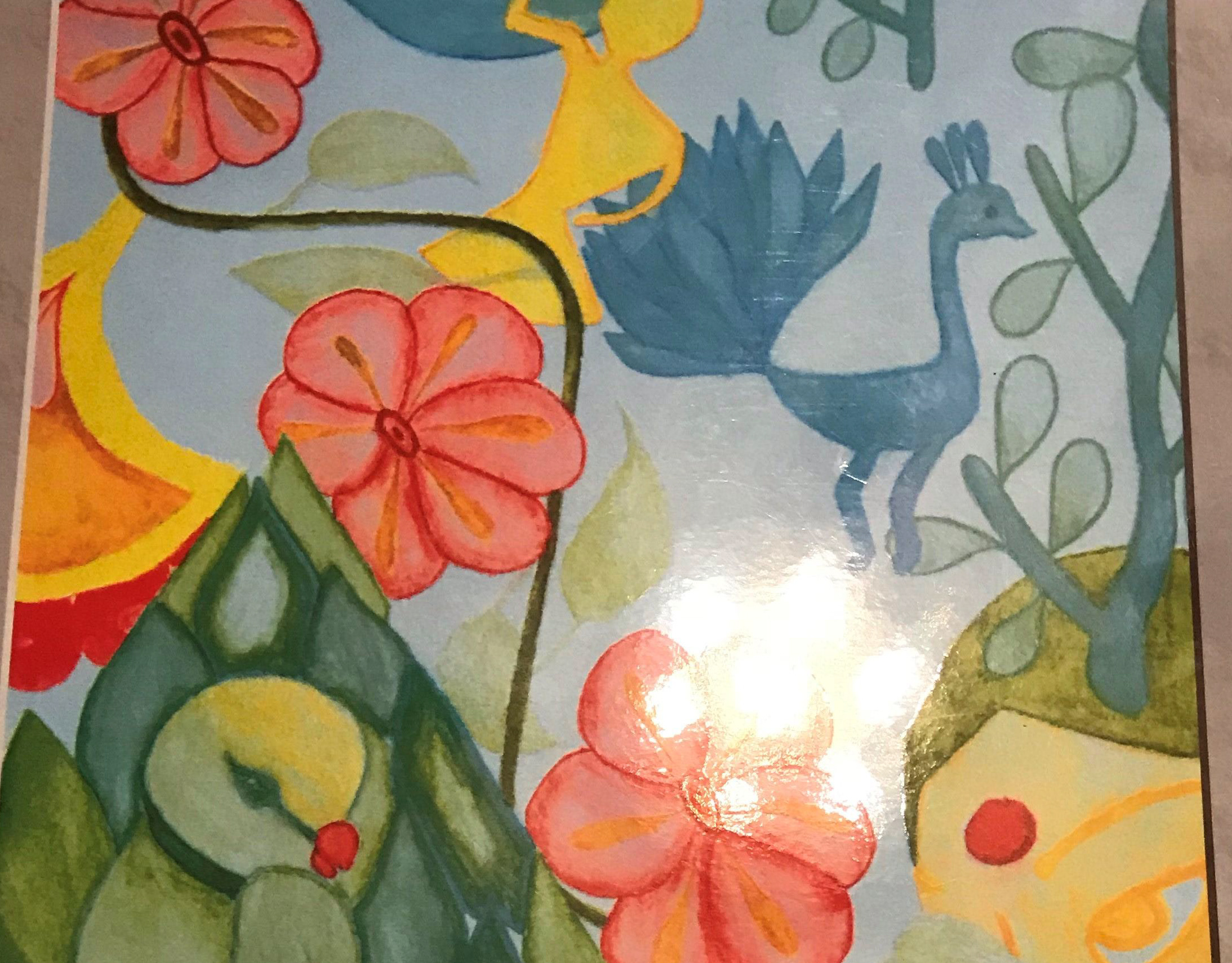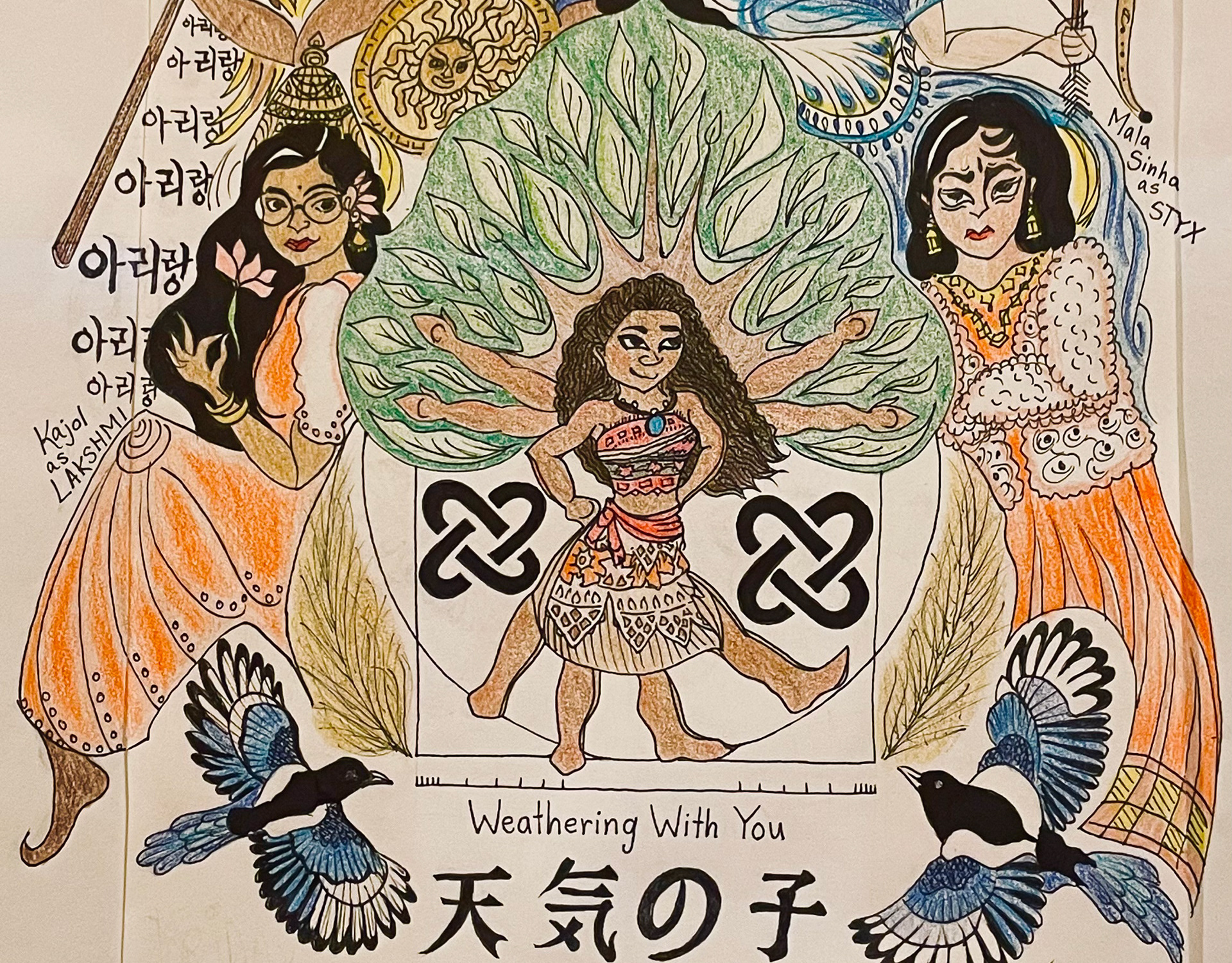"Flute Choir: Winter Concert" (2022)
Brochure designed using ink. Each piece from the concert repertoire was incorporated. For instance, "Stained Glass Windows" was a general theme, hence the entire piece is framed into a classic, Gothic window. The upper panel represents "March of the Planets," the rose beneath the planets represents the "Roses" piece, and the upper-left panel represents "La La Land: City of Stars," in which Emma Stone dances beside 5-star film ratings and a streetlight (which is reflected on the right panel's border). The upper-right panel contains Georges Bizet's "Carmen" via a sweeping skirt covered with the hearts of men who fall for Carmen. The central plum symbolizes the "Sugar Plum Fairy," the reed flutes lining the lower left and right panels' edges are from the "Dance of the Reed-Flutes," all from Tchaikovsky's "Nutcracker Suite." "March" from "Nutcracker" is combined with the "March of the Toys" piece in a soldier-teddy-bear playing piccolo on the lower right panel. "I Have a Dream" from "Les Misérables" is captured on the lower left panel through the girl from the novel's book cover. Finally, "Treasures Under the Sea" is portrayed through treasure chests and seaweed in the lowermost panel. Bold lines and reflective scripts are used to highlight the concert date as window shutters. The "Bi-Co" or bi-college is similarly kept in thick, sharp angles, with "Winter Concert" script kept in diminishing/growing font. The entire brochure design exemplifies symmetry and harmonious composition.
More from this Category:









